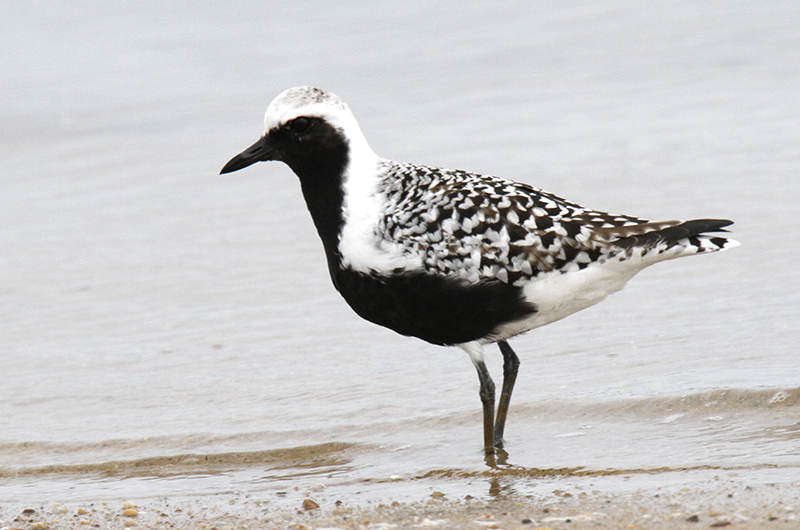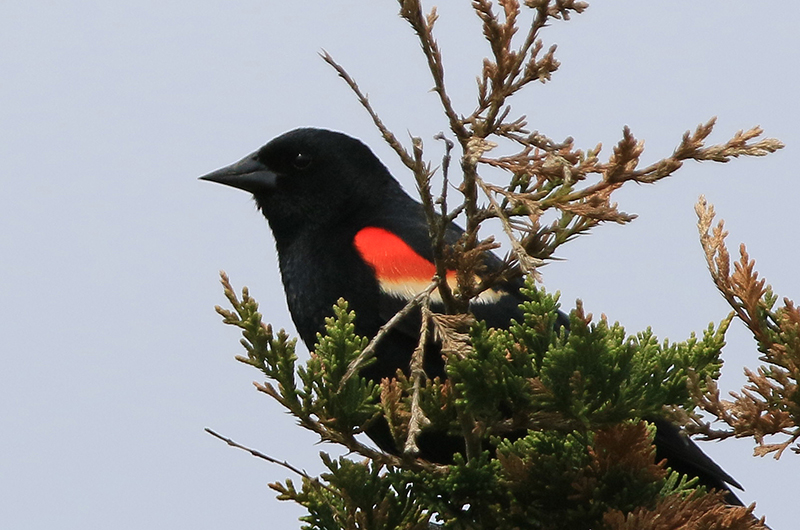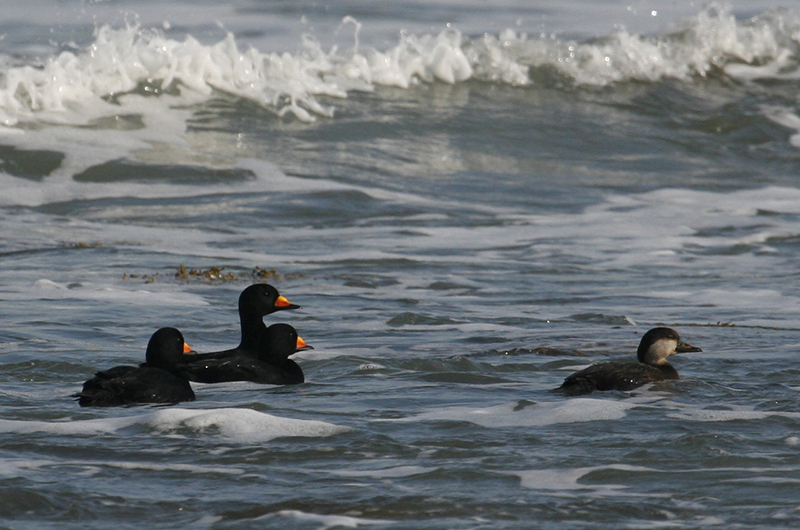Well, there are black birds (birds that are black) and then there are blackbirds (a distinctive family of birds). In words they sound so alike but in actuality, they are quite different!
Possibly the most common set of black birds are the corvids, of which we have four species here. The largest of these is the northern variety, the common raven, which was first spotted on the Island in April of 2014, and as of 2018 they have nested and become year-round residents. These wash-a-shores did not take long to get to like the Vineyard. Wendy Culbert heard and saw them most recently as they noisily perched on our neighbor’s roof on June 19. Where will this family group spend the summer, and where did last year’s fledglings go?
The next largest species is the long-time permanent resident American crow. We all know the crow and its familiar call, especially those unlucky enough to have a family of youngsters holding court near the house. On June 22 Lisa Yntema found an adult crow feeding one of its youngsters near Middlepoint Road in West Tisbury.
Fish crows are their slightly smaller cousins, common in the winter but not yet confirmed as a breeding species. They are widespread breeders on the Cape, and a little birdie told me they nest on Nantucket. Why not here? Last summer we had reports of fish crows from Long Point, Lambert’s Cove Beach and Menemsha, but the sightings were not confirmed.
The fourth corvid is one that is not even black. It is our widespread friend, the blue jay. Their predatory behavior when robbing nests is one way to identify them as in the crow family. I like to hear their most un-jay like call — a softer and more musical “tea-CUP!”
Voice is the easiest way to distinguish these species, as their size can be deceiving without a good comparison. Listen to their calls as translated into English: cr-r-ruck or prruk, caaww, cah-ah, and last but not least, black JAAYY!
And then there are the blackbirds, which generally are black birds. They are the size of a blue jay or smaller, and they have a slenderer and evenly-tapered bill. The largest of these is the widespread common grackle, with an iridescent head. Laura Hilliard was the most recent to see them on June 20. Male red-winged blackbirds are slightly smaller and widespread. Males have the red patch on the wrist of their wing, although it looks like the red is on their shoulder when perched. Females look like over-grown sparrows with their heavy brown streaking.
Brown-headed cowbirds are another cousin, the males of which are mostly black despite their name. The females are not black, and they skulk around searching for other bird nests to lay their eggs in — an adaptation that historically enabled them to travel with nomadic herds of bison.
Finally we have the European starling, a cosmopolitan species native to, not surprisingly, Europe. As a black bird that is not a blackbird, its often yellow beak is distinctively long and tapered. Sarah and Andrue Carr watched a starling feeding suet to its young on June 22.
Bird Sightings
Warren Woessner spotted a saltmarsh sparrow in the salt marsh bordering Mattakesset Bay on June 22. On the Norton Point Beach tidal flats he also found black skimmers, willets, black-crowned night heron, and a straggling black-bellied plover that is supposed to be way up north on its breeding grounds.
The Felix Neck early birders walks are held every Thursday. The first of the season was June 20 and Steve Allen reports 29 species including belted kingfisher, willet, prairie warbler, common yellowthroat and pine warblers. On June 22 he spotted a pair of snowy egrets there.
Charles Bangs reports spotting a great blue heron from the Tisbury Great Pond shoreline. It is still June, they do not nest on the Vineyard, and they are supposed to be in their nesting colony. Guess that one did not read the book!
Back to some black birds, this time of the ocean. Margaret Curtin spotted a white-winged scoter on Edgartown Great Pond on June 17, and Lisa Yntema spotted its cousin, the black scoter, from the Gay Head cliffs.
Come on folks, bird news is somewhat scarce this week. So get out there and find me something special to write about next week! Happy July 4th week to all.
Please report your sightings to birds@mvgazette.com.
Robert Culbert is an ecological consultant with Nature Watch LLC living in Vineyard Haven.








Comments
Comment policy »